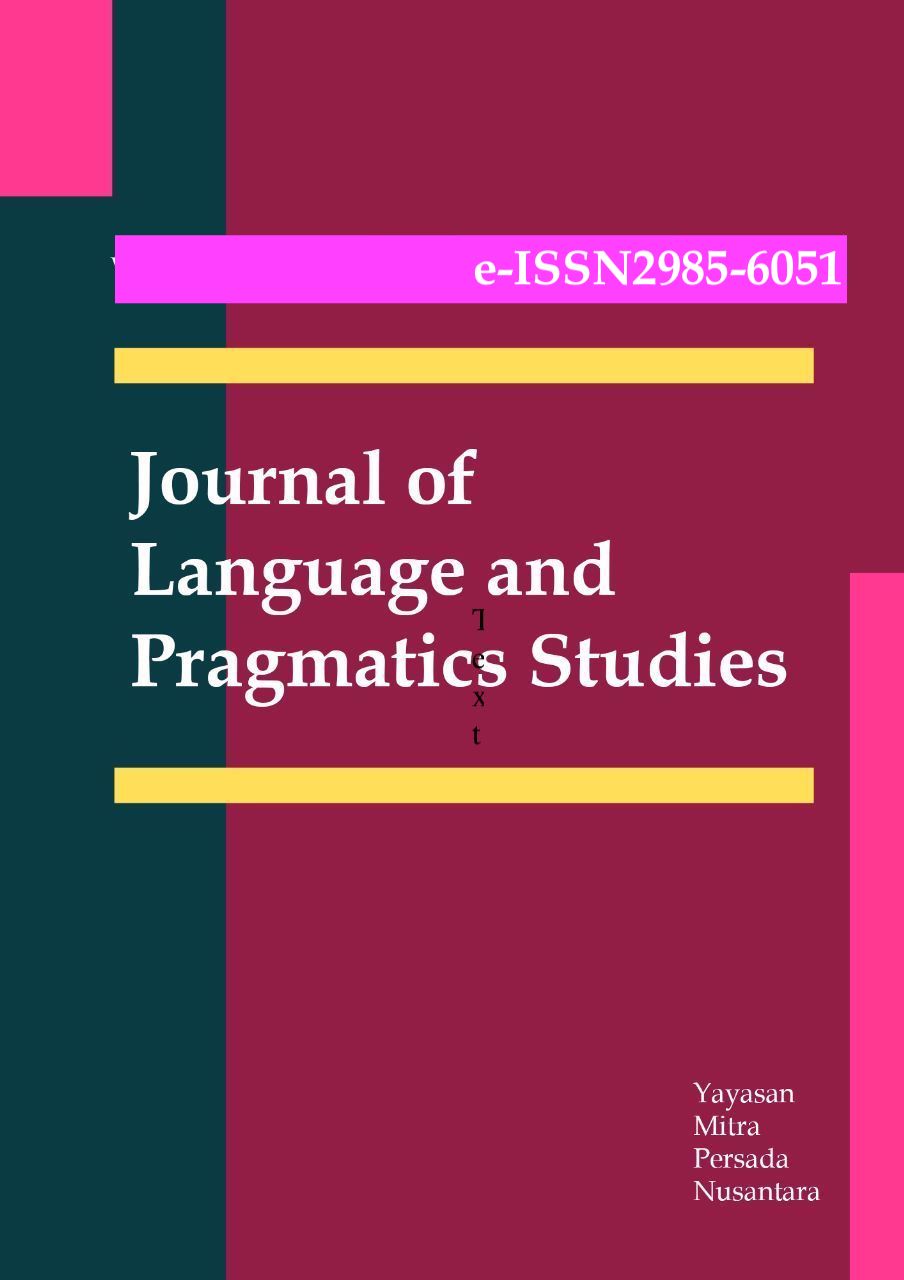Virtual reality used in English proficiency test based on apps
DOI:
https://doi.org/10.58881/jlps.v1i1.4Keywords:
English test, English skills, IELTS, TOEFLSAbstract
Today, the English Proficiency Test for both Tests of English as a Foreign Language (TOEFL) and International English Language Testing System (IELTS) become something important to people, especially for students who want to continue studying in universities within countries that use English as the first language. TOEFL and IELTS are used by the universities to assess the students' English language skills and are also used as indicators of whether they can understand and follow the lessons well later. Therefore, many institutions compete to develop their media and program array to become people's choice for testing their TOEFL and IELTS skills. The purpose of applying this virtual reality technology in the English Proficiency Test to utilize the function of virtual reality technology in English Proficiency Test such as TOEFL and IELTS based on Apps. In this case, we used a descriptive method to describe the problem faced when this idea is implemented. This idea's results are expected to increase the attractiveness, confidence using the Apps and finally boost the test score. Besides, it is expected that this virtual reality used in English Proficiency Test based on Apps can give the best experience to people who can't take the test in an offline institution.
References
Atmaja, B, T., Akagi, M., & Elbarougy, R. (2020). Dimensional Speech Emotion Recognition from Acoustic and Text Features using Recurrent Neural Networks. International Journal of Informatics, Information System and Computer Engineering. 1(1), 95-126.
Bertram, J., Moskaliuk, J., & Cress, U. (2015). Virtual training: Making reality work?. Computers in Human Behavior, 43, 284-292.
Burdea, G. C., & Coiffet, P. (2003). Virtual reality technology. Canada: John Wiley & Sons.
Damayanti, L., & Gafur, A. (2020). English Proficiency of Students at Politeknik Negeri Balikpapan Based on TOEIC. Teknosastik, 18(1), 50-58.
Feast, V. (2002). The impact of IELTS scores on performance at university (Doctoral dissertation, Flinders University).
Kartaltepe, E. J., & Xu, S. (2006). Towards Blocking Outgoing Malicious Impostor Emails. Proceedings of the 2006 International Symposium on a World of Wireless, Mobile and Multimedia Networks (WoWMoM'06).
Li X, Lv Z, Zheng Z, Zhong C, Hijazi I H, & Cheng S. (2017). Assessment of lively street network based on geographic information system and space syntax. Multimedia Tools and Applications 76(17), 17801-17819
Liu, J., & Costanzo, K. (2013). The relationship among TOEIC listening, reading, speaking, and writing skills. The research foundation for the TOEIC tests: A compendium of studies, 2, 2-1.
Madini, A. A., & Alshaikhi, D. (2017). Virtual reality for teaching ESP vocabulary: A myth or a possibility. International Journal of English Language Education, 5(2), 111-126.
Mandal, S. (2013). Brief introduction of virtual reality & its challenges. International Journal of Scientific & Engineering Research, 4(4), 304-309.
Om, K. (2017). Secure Email Gateway. IEEE International Conference on Smart Technologies and Management for Computing, Communication, Controls, Energy and Materials (ICSTM), 49-53.
Panyawong-Ngam, L., Tangthong, N., & Anunvrapong, P. (2015). A model to develop the English proficiency of engineering students at Rajamangala University of Technology Krungthep, Bangkok, Thailand. Procedia-Social and Behavioral Sciences, 192, 77-82.
Pratama, I. M. Y., Sindu, I. G. P., & Santyadiputra, G. S. (2019). Pengembangan Aplikasi Virtual Reality Mengenal Macam-Macam Benda Di Sekitar Rumah Dalam Bahasa Inggris (Studi Kasus: SD Cerdas Mandiri Denpasar). KARMAPATI (Kumpulan Artikel Mahasiswa Pendidikan Teknik Informatika), 8(3), 553.
Rahmandani, M., Nugroho, H. A., & Setiawan, N. A. (2018). Cardiac Sound Classification Using Mel-Frequency Cepstral Coefficients (MFCC) and Artificial Neural Network (ANN). 3rd International Conference on Information Technology, Information Systems and Electrical Engineering (ICITISEE).
Soleimani, H., Jalilifar, A., Rouhi, A., & Rahmanian, M. (2020). Augmented Reality and Virtual Reality in a collective scaffolding platform: Abstract genre structure in a Mobile-Assisted Language Learning Study. Journal of Modern Research in English Language Studies, 7(3), 1-22.
Tichon, J., & Burgess-Limerick, R. (2011). A review of virtual reality as a medium for safety related training in mining. Journal of Health & Safety Research & Practice, 3(1), 33-40.
Wajdi, M., Sumartana, IM., & Hudiananingsih, NPD. (2018). Avoiding Plagiarism in Writing a Research Paper. Soshum: Jurnal Sosial Dan Humaniora, 8(1), 94-102. doi:10.31940/soshum.v8i1.769
Downloads
Published
How to Cite
Issue
Section
License
Copyright (c) 2022 MR Bustam, RA Nurfadillah, FN Tsaniya, DN Dewi, TVL Gaol

This work is licensed under a Creative Commons Attribution-NonCommercial-NoDerivatives 4.0 International License.



